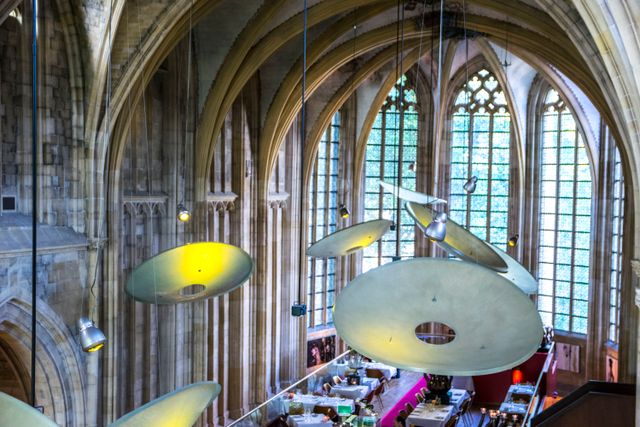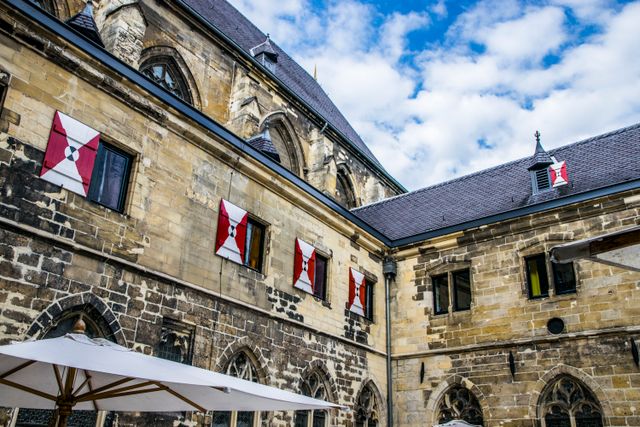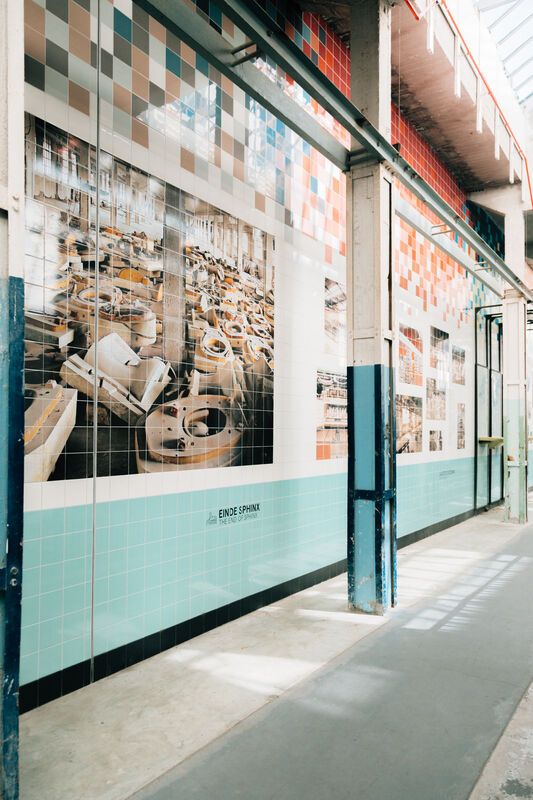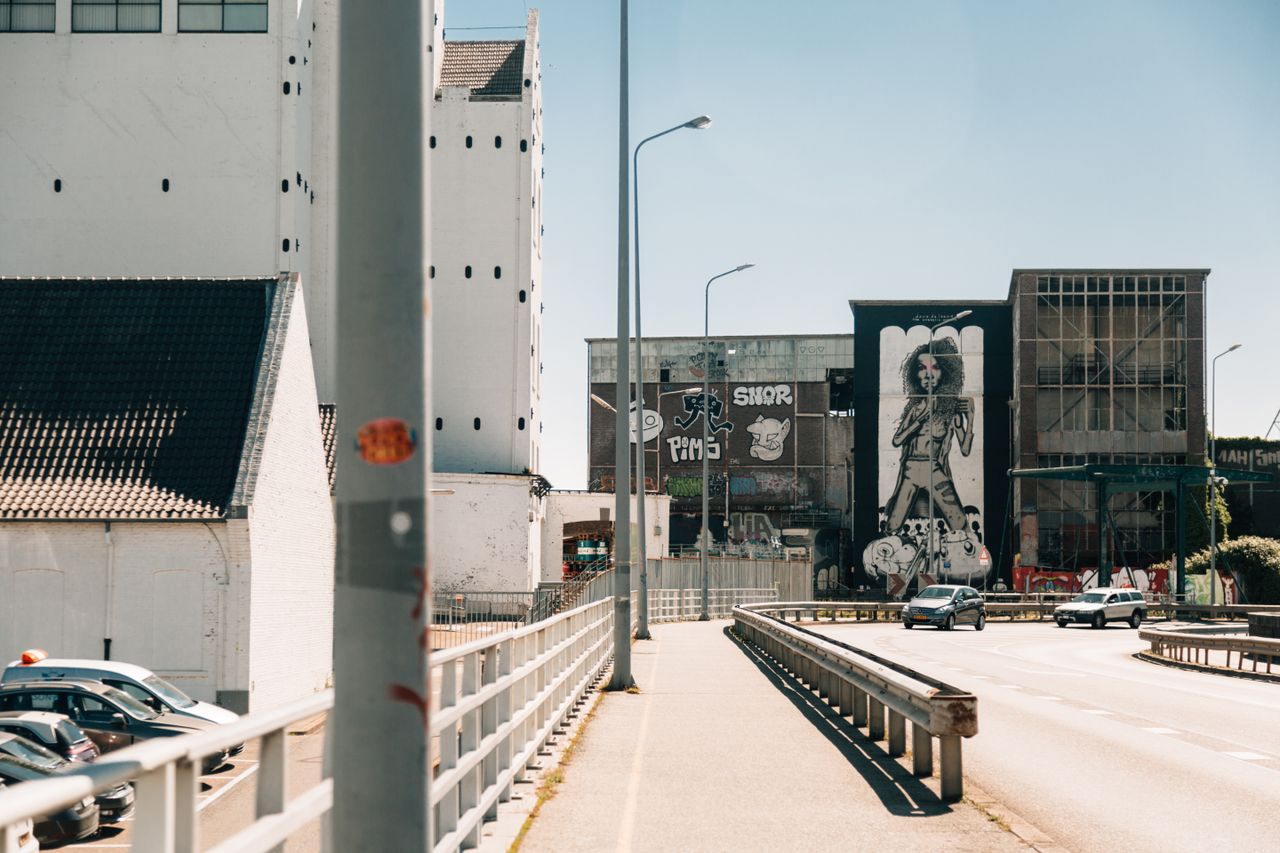Maastricht's hidden places
Dare to step off the beaten track and discover a side of Maastricht that you didn't know existed. A charming, secret, and hidden side... For one time only, we're prepared to reveal these hidden places and secret spaces. We share the Top Five places that you simply have to visit, but we ask you to keep them all a secret. Are you ready to join us?

1. Roland Topor mural
We start our journey on Tongersestraat, a place that is not an immediate attraction for tourists in the city. At the Y-junction, you'll see a cosy café terrace shared by the surrounding cafés and restaurants. Here you'll see a proud mural rise up on the side of the building. This is a true piece of art after the design of the French artist Roland Topor who passed away in 1997. This mural was revealed by Mayor Philip Houben in 1988 to celebrate 40 years of human rights. The mural continues to call on people to denounce human rights violations anywhere in the world. The site of this work of art is called Kakeberg, but it is better known as the Y-junction in Tongersestraat that runs towards the bustling city centre. The Saturday that the mural was unveiled marked exactly 40 years since the United Nations General Assembly adopted the Universal Declaration of Human Rights. As you walk past this mural during your visit to Maastricht, this is a great moment to just take a second and think about this important moment in history. The work of art has been painted by three Limburg artists: John Prop, Anne-Hilde Bruining, and Arjan van Dam. Roland Topor created the original piece for Amnesty International.


2. Kruisheren Hotel
If you walk along Tongersestraat toward the city, you can turn left onto Abtstraat. When you cross Calvariestraat, you will be met by the most beautiful monastery of Maastricht. This is the Kruisheren Hotel, a five-star hotel located in a Gothic monastery. The Kruisheren monastery has not been used as a monastery for over two centuries. In the last century, the church and monastery buildings served as a national agricultural testing station and as storage and rehearsal space for opera group Opera Zuid. When you enter through the imposing entrance, you will discover the astonishing architecture that defines this unique hotel. The hotel is part of the Oostwegel Collection, just like Château Neercanne. As this building is a listed monument, nothing may be fixed to the walls, but this restriction resulted in magnificently creative solutions by the architects. Tip: be sure to visit the toilet before you leave...

3. Hoge Fronten park
Take a walk through Brusselsestraat toward Emmaplein square. Turn right into Zakstraat and treat yourself to something tasty from one of the best bakers in Maastricht: Bakkerij Mathieu Hermans. Then continue walking to the end of the street, cross Statensingel, and walk all the way 'down' towards the Sphinxkwartier district. Enter Hoge Fronten park via the entrance of the Rizzjement. Here you will see both above-ground and underground fortifications. After it became clear in the late Middle Ages that improved artillery meant that the city walls were no longer sufficient as a defence, new outer fortifications were also constructed outside the city wall in Maastricht. Traditionally, the belt of fortifications in the western part of the city consisted of an upper part with dry canals – the Hoge Fronten – and a lower part with wet canals – the Lage Fronten. This is also where the entrance to the Kazematten underground tunnel system is located. Between 1575 and 1825, a network of underground passageways or mine galleries was created on the western side of Maastricht. During times of siege, these tunnels were used to approach and surprise the enemy from under the ground. Like moles underground, people dug this 14-kilometre-long system of defensive tunnels under the western side of the city in the 18th century. The soldiers in these tunnels 'listened' to find out whether the enemy was trying to undermine the defensive works, and then began a counter-attack from underground. This all forms part of Maastricht's extensive and often violent history of which you can now enjoy the beautiful things. Simply put, taking a walk through the Hoge Fronten is a fantastic idea!

4. Sphinxpassage
This is not such a big secret anymore, as it has already been mostly discovered. However, because of its location, we'll include it on this special tour. Follow Maagdendries until you reach Boschstraat. Turn left in front of the Sphinx buildings. Have you heard about the unique Sphinxkwartier district yet? This is an industrial and trendy new district in the city centre. In the nineteenth century, the northern part of the district, the current Sphinx site, developed into what can probably be called the cradle of the industrial revolution in the Netherlands. From 1820 onwards, Petrus Regout rapidly built up a large industrial complex there, including a glass and crystal factory, an earthenware factory, a red lead factory, a potash factory, a nail factory, and a gun factory. In 1862 there were no fewer than seventy factory buildings and supply companies in this region, and by 1899 there were already 3,000 people working there. These days, this district is home to Lumière Cinema, 't Bassin (Maastricht marina), Pathé Cinema, Loods 5, and The Social Hub. Be sure to take a stroll through the Sphinxpassage, a 120-metre-long tiled and covered passageway connecting the Eiffelgebouw building with Pathé cinema. Nearly 30,000 tiles bring to life the history of Sphinx together with words, images, and objects.

5. Landbouwbelang building
Walk back toward Maastricht marina, known as 't Bassin. On your left is Lumière Cinema. If you walk a little further, you'll see the Landbouwbelang building on the Meuse. This is an old granary and transshipment warehouse. It used to be an agricultural cooperative, later it became the property of the paper multinational Sappi, which then sold it to the Municipality of Maastricht a few years ago. In 2002, the building was broken into and occupied by squatters. The squatters organize cultural activities in the building, varying from an open stage to large parties. There are also art studios, film evenings, vegetarian and vegan home cooking, and a give-away shop. The garden is very unique, and on the side of the building you will find one of the few places in Maastricht with extensive graffiti. If you look in this direction from the Wyck district, you will discover a special view. Take a seat on a bench in De Griend park and enjoy the passing boats and the unforgettable view.